If you encounter a blue screen of death with a 0xc000000e error code, you’re not alone. Although this sort of boot problem seems serious and even scary, it’s possible to fix. In this article, you’ll learn to solve it step by step.
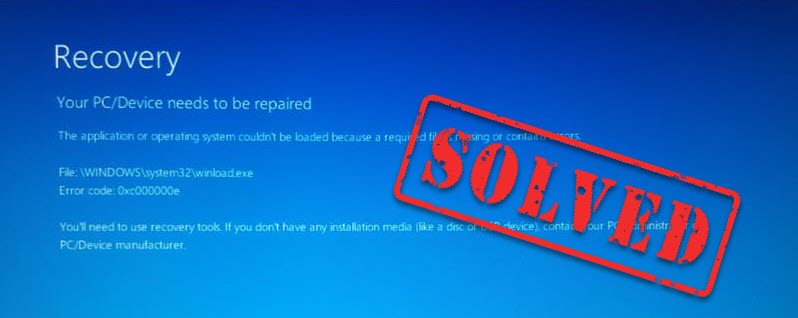
What is 0xc000000e error
The 0xc000000e error code generally appears when you’re trying to boot your PC. There are a variety of causes for this issue, such as faulty hardware, connected external device, missing, corrupt or misconfigured boot configuration data, or incorrect BIOS configuration.
6 fixes for 0xc000000e error
Here are 6 fixes that got many users past the 0xc000000e error. You may not try them all, just work your way down until you find the one that does the trick for you.
- Disconnect external devices
- Perform startup repair
- Rebuild the BCD
- Change the SATA mode
- Reset the BIOS settings to default
- Repair your Windows computer
Fix 1 – Disconnect external devices
The 0xc000000e error may occur as a result of faulty or incompatible hardware. To determine whether it’s the cause, you can remove the peripheral devices that were recently added to your PC.
Besides, make sure to unplug any additional storage devices like USB drives, memory card readers, CDs and DVDs in case the computer boots into attached disks prior to your system drive.
Restart your PC to see if the issue is resolved. If not, move on to deeper troubleshooting with the fixes below.
Note: The fixes below require the use of a bootable Windows installation media. If you don’t have one, follow the guide here to create one:
Fix 2 – Perform startup repair
Whenever you encounter a startup problem, it’s a good option to run Windows automatic startup repair. As a built-in recovery tool, it can diagnose and fix some common system problems.
1) Insert the installation media you created, and start your computer.
2) Before the Windows logo appears, press the F12 key repeatedly to enter the boot option menu.
3) Use the down arrow key to select your USB, CD or DVD as the boot device and then press Enter.
4) Choose your preference for language, time and input method, and click Next.
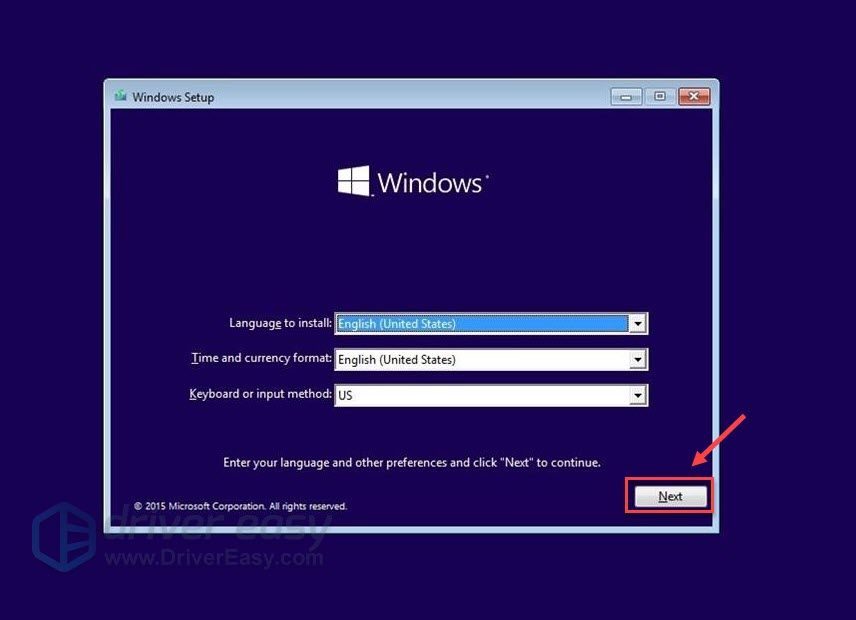
5) Click Repair your computer.

6) On the Choose an option screen, click Troubleshoot.

7) Click Advanced options.
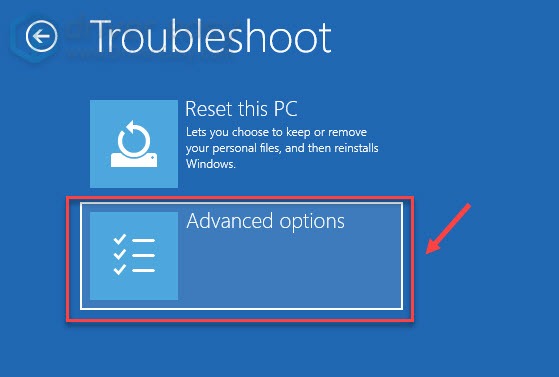
8) Click Startup Repair.
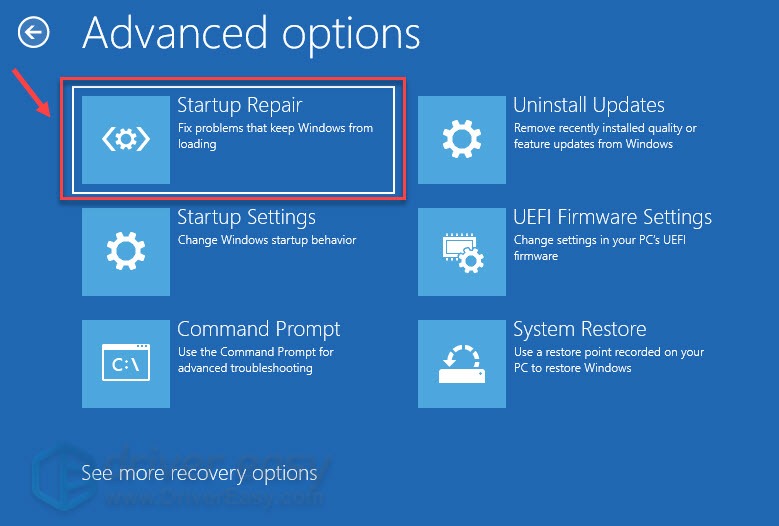
Wait for the process to finish and reboot your computer. If it starts up normally, then congrats! If the problem still exists, check out the next fix.
Fix 3 – Rebuild the BCD
Boot Configuration Data (BCD) stores critical settings and options required to start a Windows PC. In other words, the 0xc000000e error will happen if the BCD is missing, corrupt or improperly configured. If so, the easiest solution is to rebuild it.
1) Insert the installation media you created. Then boot your computer from this disk.
2) Choose your preference for language, time and input method, and click Next.
3) On the Choose an option screen, click Troubleshoot.
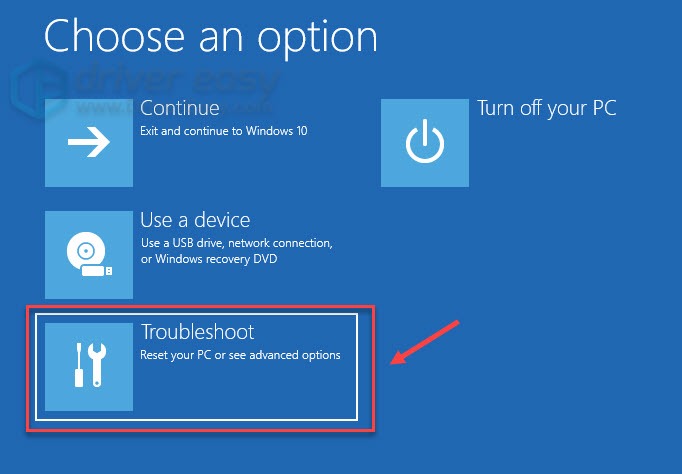
4) Select Advanced options.
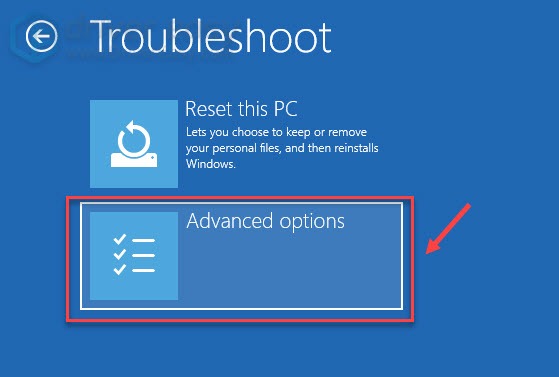
5) Click Command Prompt.

6) In the command prompt window, type in the following commands and press the Enter key after each command:
bootrec /scanos
bootrec /fixmbr
bootrec /fixboot
bootrec /rebuildbcd
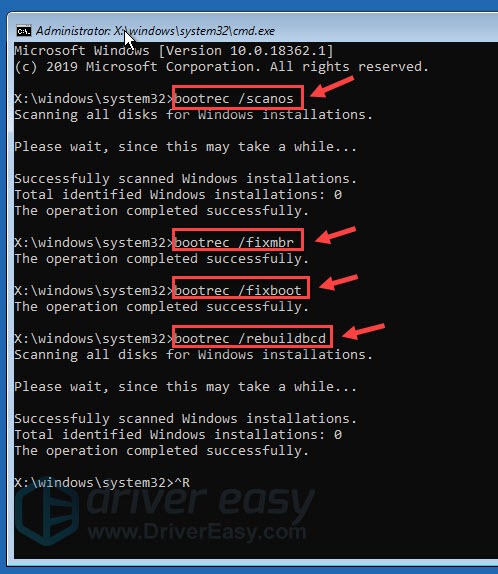
After all the above commands complete running, start your computer again and check if the 0xc000000e error persists. If yes, don’t worry. We’ve got another solution for you.
Fix 4 – Change the SATA mode
If SATA (Serial Advanced Technology Attachment) is set incorrectly in the BIOS, your computer won’t boot the way it should. Changing the SATA mode will help you resolve the 0xc000000e issue.
1) Start your computer. Then, before the Windows logo appears, repeatedly press the F2 key to enter BIOS (or DEL, F1 or F10 key depending on your computer brand) .
2) On your keyboard, use the right arrow key to select the Advanced tab. Then, select IDE Configuration, and press Enter.
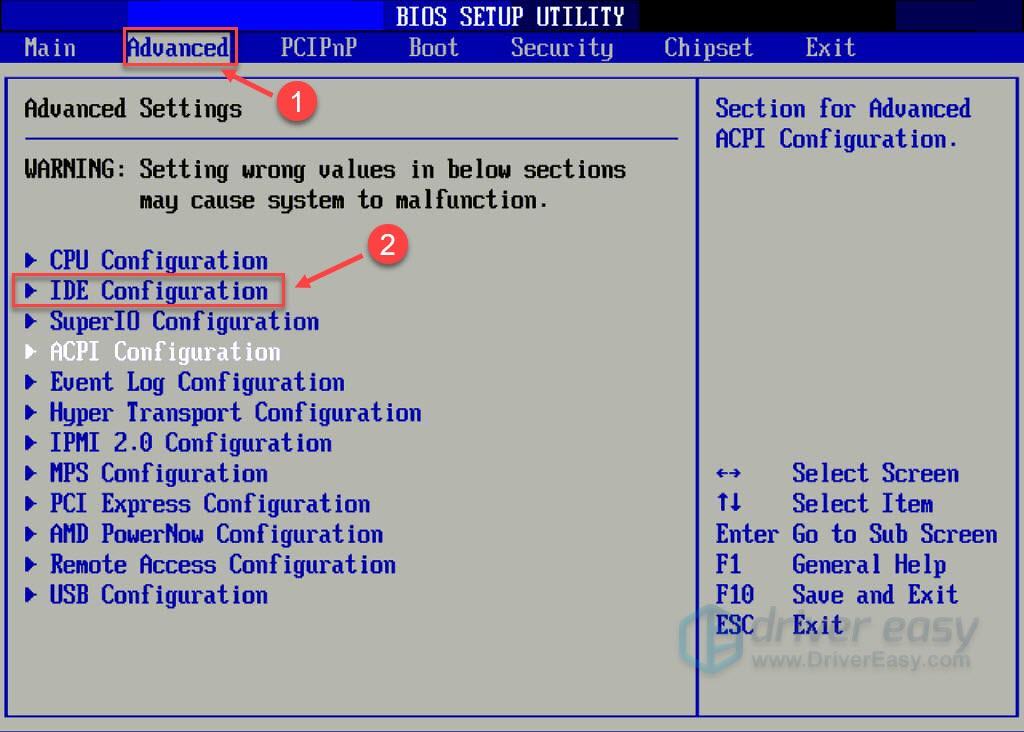
3) Select Configure SATA as. Then, select AHCI and press Enter.
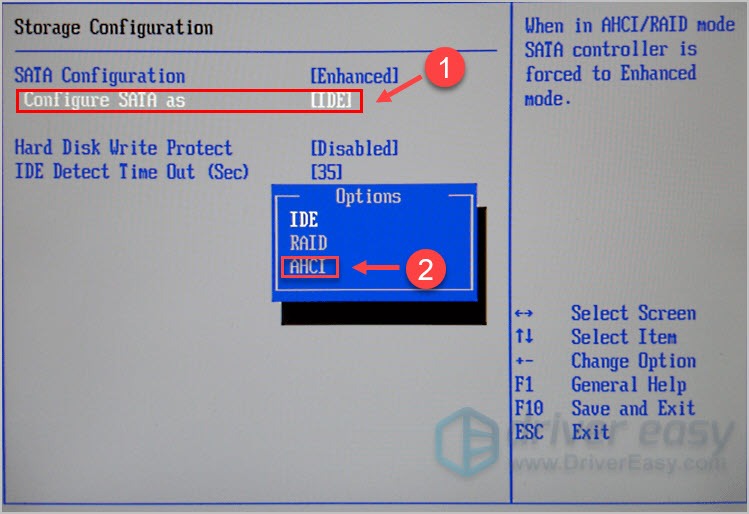
4) Press the F10 key to save and exit the BIOS.
Restart your computer to test if this setting works. If not, change the SATA mode to a different option. If none of the options solves the problem, continue with the fix 5.
Fix 5 – Reset the BIOS settings to default
Improper BIOS configuration will also result in the 0xc000000e error. In this case, you can simply reset it to default.
1) Start your computer. Then, before the Windows logo appears, repeatedly press the F2 key to enter the BIOS (or DEL, F1 or F10 key depending on your computer brand).
2) Select the Exit tab using the right arrow key and select Load Setup Defaults. Then, select Yes and press Enter.

3) On your keyboard, press the F10 key and Enter to save the changes and exit.
Start your computer now. Does it successfully boot to the desktop? If not, try the last fix.
Fix 6 – Repair your Windows computer
If neither of the methods above is helpful, you should consider repairing your Windows computer thoroughly. Instead of performing a clean reinstallation of your PC, you could use Fortect to repair the corrupt system files while keeping your personal files, settings and applications.
1) Download and install Fortect.
2) Open Fortect and click Yes to run a free scan of your PC. 
3) Fortect will scan your computer thoroughly. This may take a few minutes.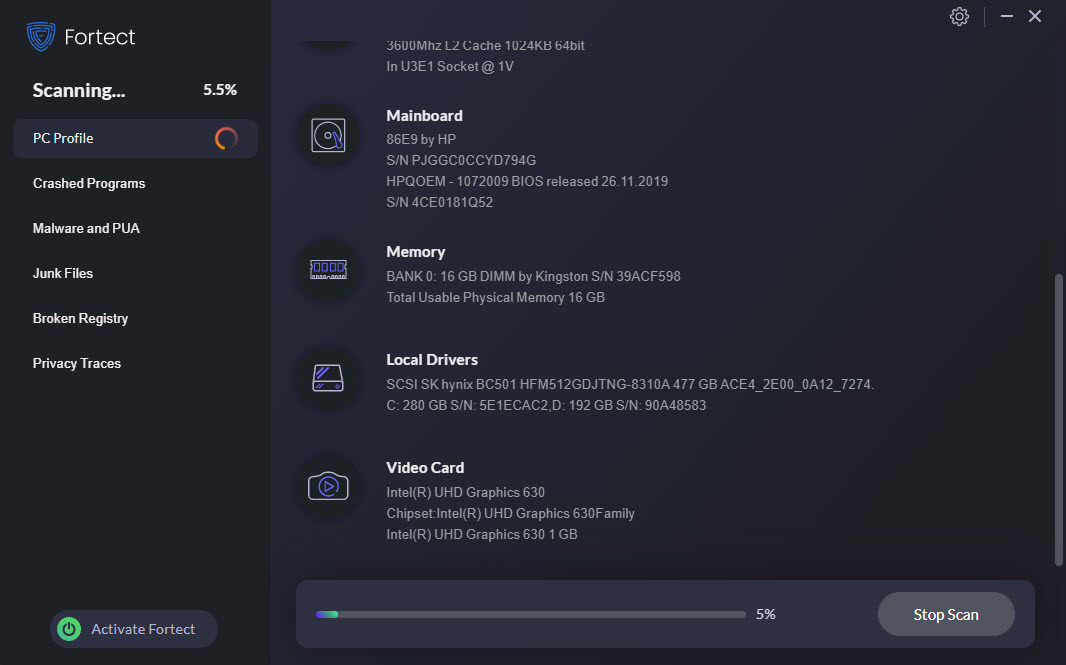
4) Once done, you’ll see a detailed report of all the issues on your PC. To fix them automatically, click START REPAIR. This requires you to purchase the full version. But don’t worry. If Fortect doesn’t solve the issue, you can request a refund within 60 days. 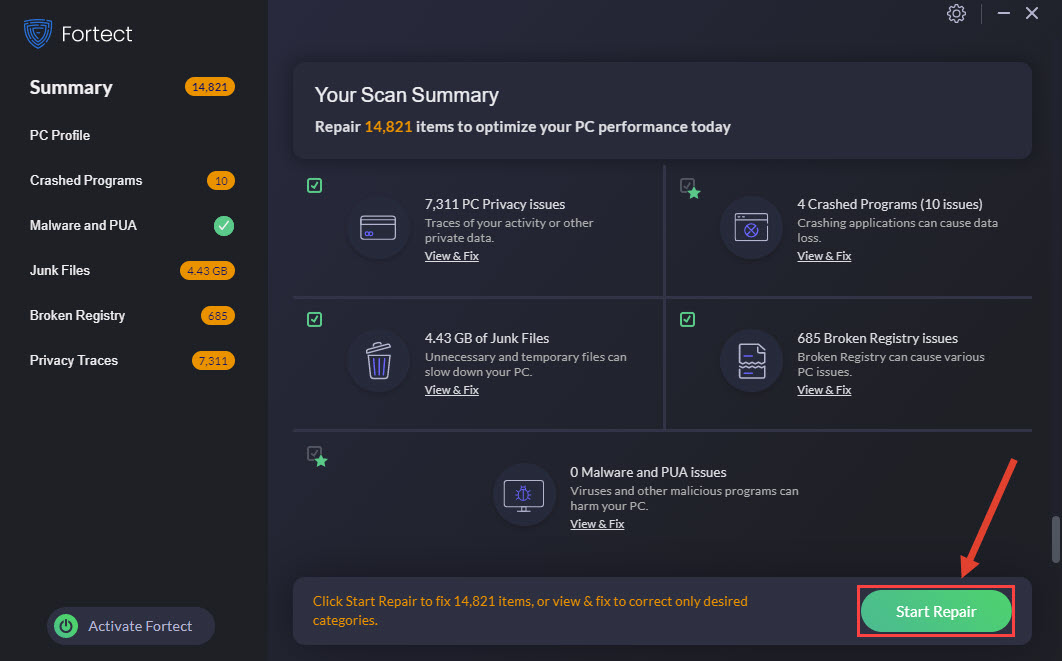
Now restart your computer and check if your device is able to work properly.
Bonus tip: Update your device drivers
If you randomly run into computer problems like a blue screen of death, there might be something wrong with your drivers. Missing or outdated drivers can cause many issues. If you want to have better computer experience and prevent potential problems, it’s essential that you have the latest correct device drivers all the time.
Option 1 – Update your device drivers manually
You can update your device drivers manually by going to the manufacturer’s website, and searching for the most recent correct driver. Be sure to choose only drivers that are compatible with your Windows version.
Once you’ve downloaded the correct drivers for your system, double-click on the downloaded file and follow the on-screen instructions to install the driver.
Option 2 – Update your device drivers automatically
If you don’t have the time, patience or computer skills to update your device drivers manually, you can do it automatically with Driver Easy.
Driver Easy will automatically recognize your system and find the correct drivers for it. You don’t need to know exactly what system your computer is running, you don’t need to risk downloading and installing the wrong driver, and you don’t need to worry about making a mistake when installing.
You can update your drivers automatically with either the FREE or the Pro version of Driver Easy. But with the Pro version it takes just 2 clicks:
1) Download and install Driver Easy.
2) Run Driver Easy and click the Scan Now button. Driver Easy will then scan your computer and detect any problem drivers.

3) Click Update All to automatically download and install the correct version of all the drivers that are missing or out of date on your system (this requires the Pro version – you’ll be prompted to upgrade when you click Update All).
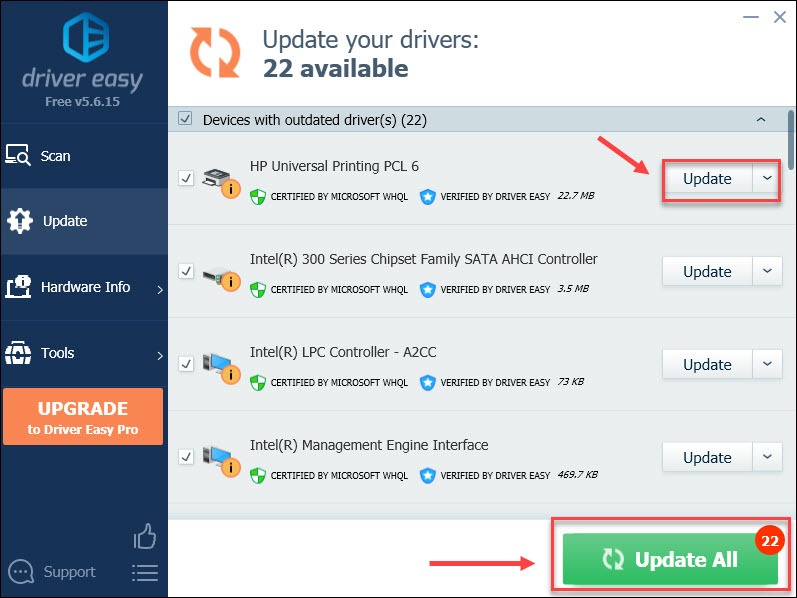
If you need assistance, please contact Driver Easy’s support team at support@drivereasy.com.
Hopefully the fixes above help you get rid of the 0xc000000e error. If you have any questions, suggestions or additional solutions, feel free to leave a comment below.





